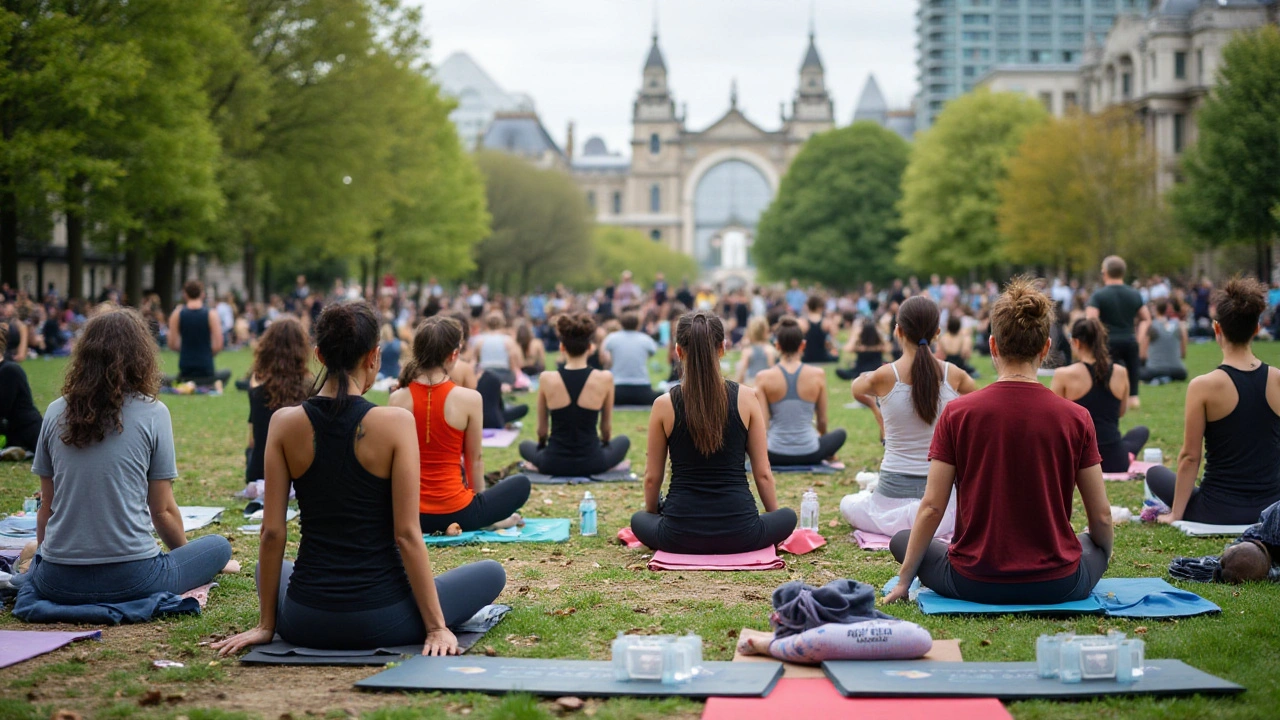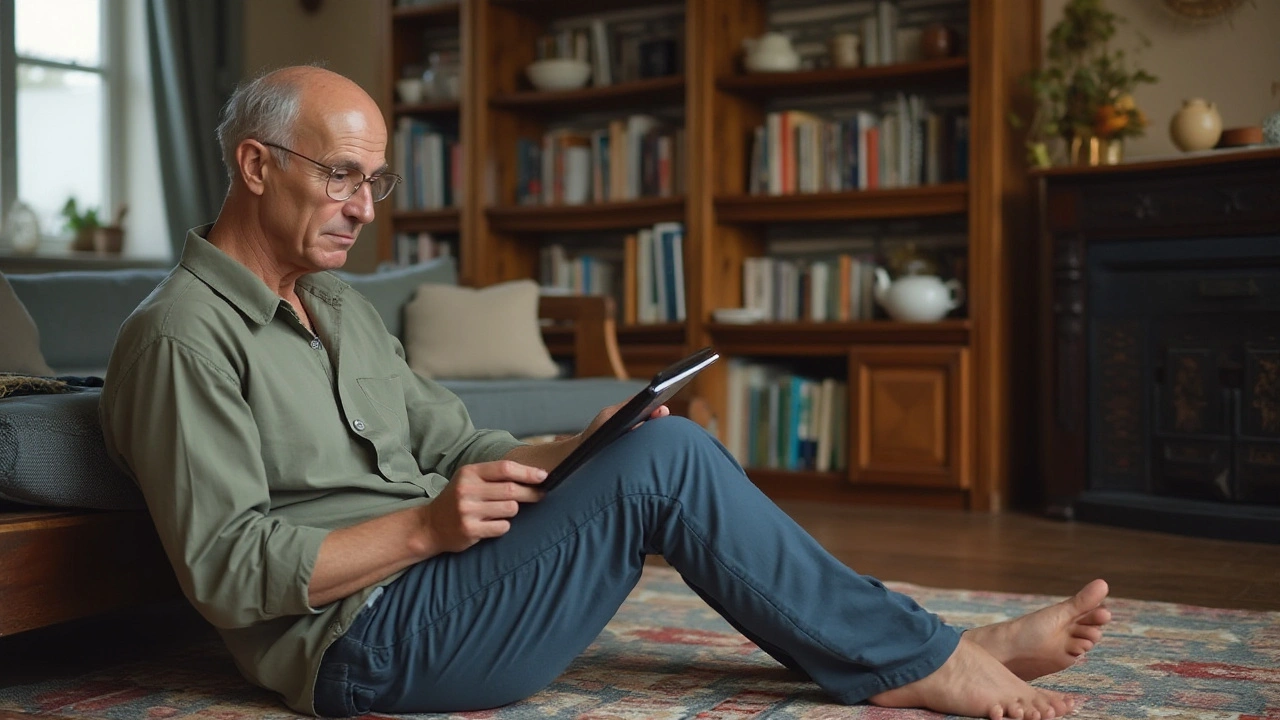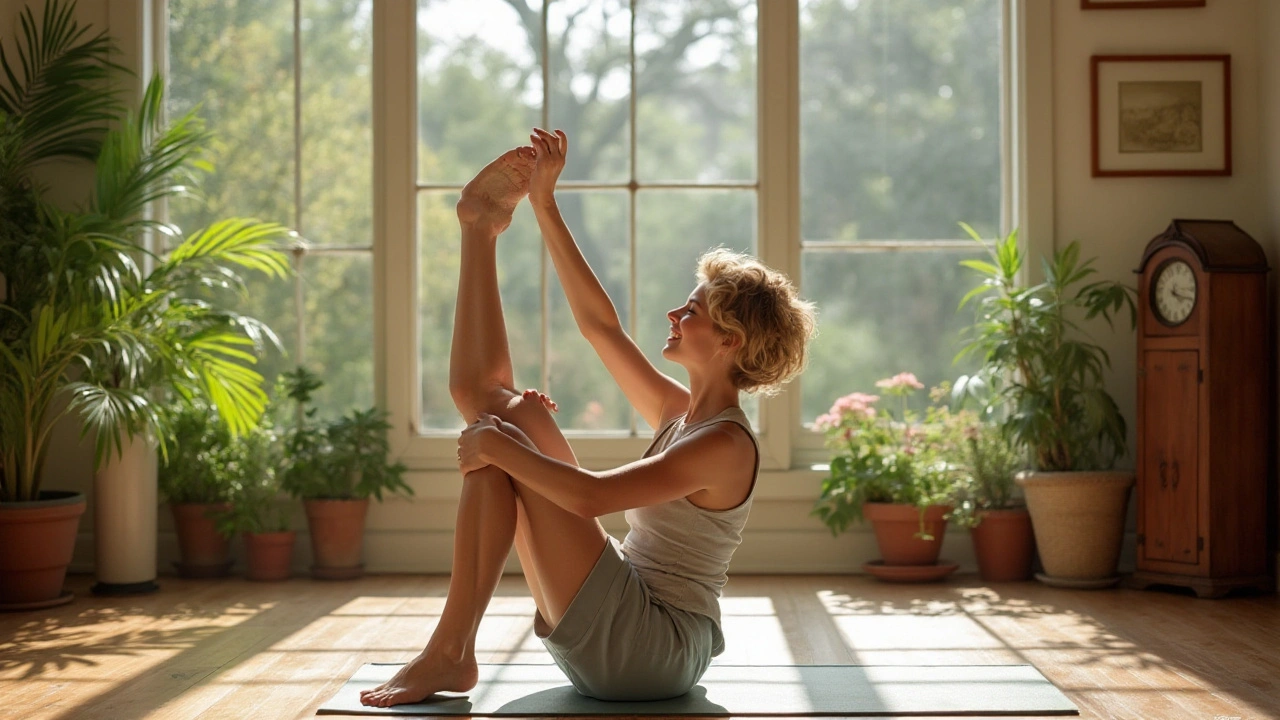Feldenkrais Training is nothing short of a revelation for those seeking a holistic approach to improving their overall quality of life. It's rooted in the philosophy of Moshe Feldenkrais, a pioneer who saw movement not only as a physical act but as a way to foster deep connections between the body and mind. This technique encourages you to engage in gentle, mindful movements that can rewire your brain for better functioning.
Whether you are an athlete looking to enhance performance or someone just trying to ease chronic pain, Feldenkrais offers strategies that are both effective and easy on the body. With its non-invasive nature, it invites you to explore the possibilities of movement, potentially unveiling aspects of your physicality that have long been overlooked.
Experiencing this ancient wisdom in today's fast-paced world might be just the remedy you need. As you delve deeper into its practice, you'll discover stories from individuals just like yourself who have found peace and vitality through increased self-awareness and improved mobility. Embarking on this journey may open up new pathways to a healthier, more fulfilling life.
- Understanding Feldenkrais
- Benefits of Feldenkrais Training
- Incorporating Feldenkrais into Daily Life
- Experiences and Stories
Understanding Feldenkrais
The Feldenkrais Method is a revolutionary approach to movement and awareness developed by Dr. Moshe Feldenkrais, an Israeli physicist and engineer, in the mid-20th century. It draws on a mixture of biomechanics, neuroscience, and psychological principles. The main focus is to harness the brain’s innate capacity to improve and change, advocating the philosophy of neuroplasticity—our ability to form and reorganize synaptic connections, particularly in response to learning or experience—or injury.
Feldenkrais believed that by understanding the interplay between thought, movement, sensation, and feeling, we could liberate the body from constrained or habitual movement patterns. Most people know how repetitive stress or trauma can lead to chronic pain or limited motion. Through the Feldenkrais Method, people explore how different motions can produce variations in the neural pathways of the brain, encouraging healing and enhancement of function.
"Movement is life. Life is a process. Improve the quality of the process and you improve the quality of life itself," said Feldenkrais.
Central to this approach is the idea of raising awareness of our movements through exploratory sessions termed as "Awareness Through Movement" and "Functional Integration." Awareness Through Movement is a group session where practitioners follow guided verbal instructions, usually while lying on a mat. On the other hand, Functional Integration is a one-on-one session where the practitioner uses gentle touch to guide the person in a customized movement process. Both methods aim to recover and improve natural movement, thereby influencing one's entire physical and cognitive wellness.
The Science Behind Feldenkrais
Scientific studies have shown that Feldenkrais can lead to increased cortical activity in regions of the brain associated with somatosensory function and movement. By re-engaging with our natural, instinctive ways of moving, we can potentially lower stress levels and enhance mental clarity. This method is getting attention not just in the wellness community but also among neuroscientists keen to unlock more secrets of the interconnected body-mind landscape. Health professionals frequently cite improvements in posture, balance, and coordination, and it's increasingly recognized as beneficial in rehabilitative contexts such as post-surgery recovery or chronic pain management.
Its adaptability makes Feldenkrais a compelling choice for millions around the world seeking alternative avenues for physical and mental health. It emphasizes not only function but also the quiet and subtle pleasure found in effortless and graceful movement. In essence, Feldenkrais can be your stepping stone toward a more mindful, pain-free life.

Benefits of Feldenkrais Training
Experiencing the transformative power of Feldenkrais can be akin to unlocking a dormant potential within you. Why is it so beneficial, you might ask? Primarily, it works through a gentle series of movements aimed at enhancing awareness. Unlike traditional exercise regimens that focus primarily on repetition and exertion, Feldenkrais relies on mindfulness and a keen observation of how movements affect your body’s limits and abilities. This approach allows individuals to adapt movements, progressively reducing pain and discomfort. Medical researchers often emphasize how awareness through movement can recalibrate the nervous system, achieving healthy movement without physical strain. This level of personalized adjustment has been shown to play a major role in reducing physical ailments and promoting an overall sense of well-being.
For many, improvement isn't just limited to physical health. There’s a profound mental shift that accompanies these changes. Feldenkrais training fosters a significant increase in cognitive function and emotional resilience. Learning to move more freely serves as a catalyst, encouraging a broader understanding of oneself and one’s capabilities. By breaking away from the confines of habitual movements, people often have profound realizations about their potential in various life aspects.
"Movement is life. Life is a process. Improve the quality of the process and you improve the quality of life itself," said Moshe Feldenkrais, capturing the essence of this practice.
A fascinating aspect of Feldenkrais is its inclusivity—it benefits a wide spectrum of individuals, from children looking to enhance neurological development to seniors wishing to maintain agility and balance. Research conducted at various institutes supports this inclusivity. A study published in the Journal of Physical Medicine and Rehabilitation found that elderly participants who engaged in regular Feldenkrais lessons reported better stability, reduced risk of falls, and increased physical activity. These outcomes hint at Feldenkrais as a lifetime activity—one that adapts and grows with you regardless of age or physical condition.
For athletes and performers, Feldenkrais offers yet another dimension of benefits. By refining coordination and boosting flexibility, it allows for a graceful execution of skills, often translating into enhanced performance. A considerable amount of anecdotal evidence from dancers and sports professionals illustrates positive changes in their practice when incorporating Feldenkrais. Understanding the subtleties of movement not only sharpens their technique but also aids in recovery from injuries. Feldenkrais sets its sights beyond mere bodily improvement, aiming to recalibrate how movement intersects with intention and emotion, producing a holistic enhancement.
This alignment of mind and body unfolds substantial advantages beyond the physical realm. Many practitioners report a noticeable reduction in stress levels, pointing to the therapeutic nature of this training. As participants steer their focus inward during sessions, they forge a connection with inner sentiments that facilitate emotional healing. The nurturing atmosphere found in Feldenkrais practice sessions is frequently described as meditative, and many find this quality bears positive effects on mental health.

Incorporating Feldenkrais into Daily Life
Making the Feldenkrais method a part of your everyday routine can lead to profound benefits in both physical and mental realms. To begin this journey, start by integrating short Feldenkrais sessions into your morning routine. This method hinges on the principle of 'awareness through movement', which encourages you to perform movements with mindfulness and attention. These can be as simple as gently tilting your head or rolling shoulders, but what sets them apart is the deep focus on how these movements make you feel. Over time, with regular practice, you will notice a shift in your body awareness and an improvement in your physical functioning.
One practical way to incorporate Feldenkrais into your day is by creating a dedicated space in your home where you can practice uninterrupted. This doesn’t require much more than a mat and some quiet, setting a literal and figurative foundation for your transformative journey. Consistency is key, and even dedicating fifteen minutes daily can usher in significant improvements. As you become more accustomed to these movements, you might also want to explore group classes or workshops, which can offer the added benefit of community and shared learning. According to a study conducted by the International Feldenkrais Federation, a consistent practice of Feldenkrais movements can increase range of motion and decrease pain over six weeks, highlighting the tangible benefits of incorporating this technique into one's routine.
If you're looking for community insights, delve into online forums or local groups where Feldenkrais enthusiasts share tips, setups, and experiences. There's a rich pool of knowledge to tap into. Being part of a community can be both motivating and educational. You could also attend workshops hosted by seasoned practitioners who have honed their craft over years. These sessions often provide a comprehensive dive into specific movements and forms, offering insights that might be difficult to achieve on your own. They can also provide an environment where you can correct your form, ensuring you’re gaining the full benefit of each session.
For those who prefer a more structured approach, incorporating technology can be a boon. There are various apps and online platforms that offer pre-recorded Feldenkrais sessions that you can follow at your own pace. This is particularly useful if a class schedule doesn’t fit into your life. As the renowned Feldenkrais teacher Anat Baniel says,
"The power of the Feldenkrais work comes from understanding how we learn to learn."Such resources can significantly bolster your efficacy in integrating the method into your routine, without the constraints of time or location.

Experiences and Stories
The journey into the world of Feldenkrais is often punctuated by a wealth of personal experiences and transformative stories. For many, this practice serves as a beacon of hope, shedding light on alternative paths to wellness that have previously seemed elusive. One story that stands out comes from a woman in her mid-thirties who had battled chronic back pain for years. Traditional therapies offered little relief, and she eventually turned to Feldenkrais in a last-ditch effort. Within months, she reported not only a reduction in pain but also a newfound mobility she hadn't experienced since her twenties.
What makes Feldenkrais so unique is its accessibility and the impact it can have across various demographics. From young athletes to aging seniors, the technique holds universal appeal. A retired sportsman, for instance, credits Feldenkrais with helping him regain the flexibility he feared was lost. His story is particularly intriguing because it highlights how the method doesn't just stop at physical benefits—there's a cognitive component that enhances coordination and proprioception, amplifying athletic performances remarkably.
"The Feldenkrais Method brought me not just back into my body but breathed life into my spirit," said renowned architect Richard Saul Wurman, reflecting on his experience.
There's a distinct social aspect to Feldenkrais as well. Classes often feature a mosaic of individuals, each bringing their unique backgrounds and experiences. This communal environment catalyzes a shared healing journey, where participants are encouraged to support and learn from one another. Many find this dynamic invigorating, as stories shared within the group reflect progress and camaraderie, fostering an atmosphere of acceptance.
| Age Range | Improvement Percentage |
|---|---|
| 20-30 | 45% |
| 31-50 | 60% |
| 51-70 | 75% |
An enlightening aspect of embracing movement therapy is the introspective journey it initiates. Feldenkrais encourages practitioners to question and redefine what they believe possible regarding their bodies. A fellow writer, in one of his pieces, once detailed how this reevaluation led to breakthroughs in his creative process, drawing parallels between physical alignment and mental clarity. This mutual reinforcement between the mind and body embodies the holistic essence of Feldenkrais.
For those new to the practice or contemplating joining, hearing such narratives can be pivotal. It's not just about learning new moves but about understanding how these movements can ripple through your life, ushering in unexpected growth. In essence, Feldenkrais is more than just a practice; it is a lifestyle change—a way to reclaim autonomy over one's body and, consequently, one's life.

